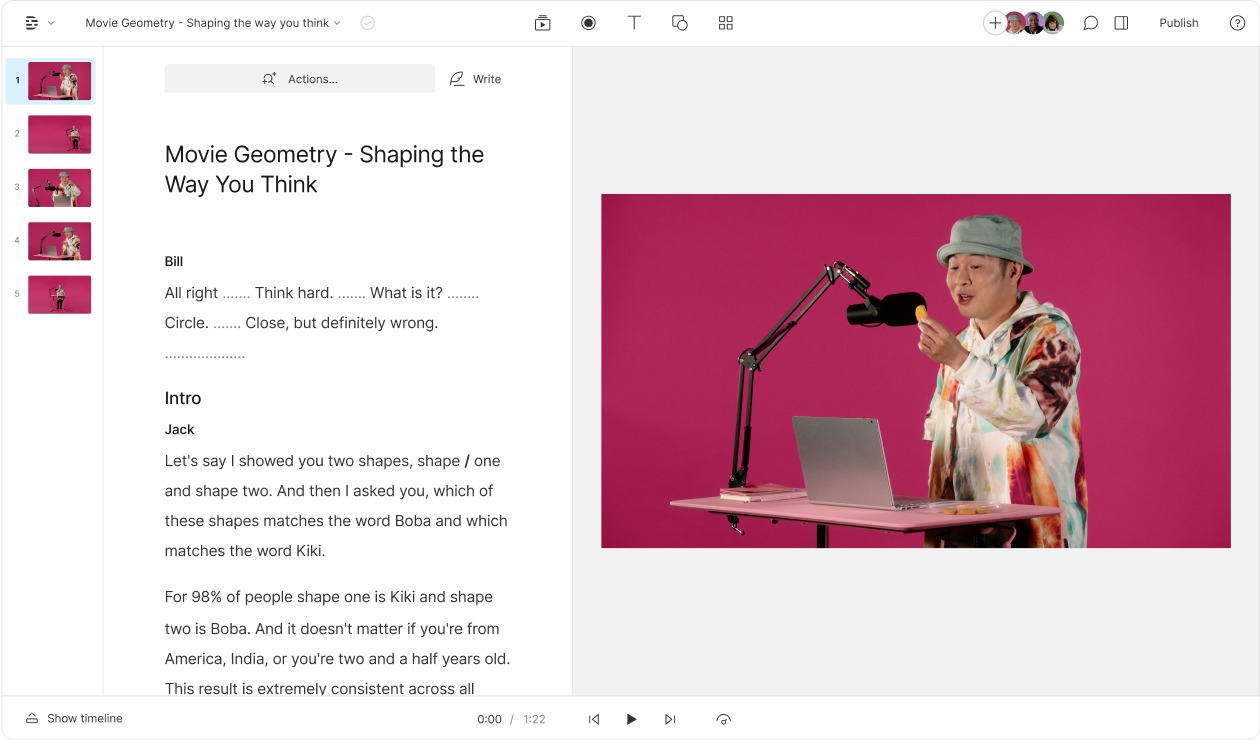What type of content do you primarily create?




Instagram's constant evolution can turn a simple video upload into a puzzling decision tree. Regular post, Reel, or Story? Each option comes with its own quirks, benefits, and hidden frustrations that nobody warns you about. In this guide, we'll cut through the confusion and show you exactly how to post videos on Instagram in all its forms—from standard posts to the algorithm-friendly Reels to the 24-hour Stories. Plus, we'll cover those engagement-boosting extras like location tags, music, and GIFs that can mean the difference between viral success and digital tumbleweeds.
3 types of Instagram video formats
There are three different types of videos you can upload to Instagram.
- Instagram videos. Instagram videos (replacing the former IGTV) are essentially regular video posts that live on your profile alongside photo posts, and within their own video page on your profile. So a regular video post is a great option for content that you want to appear permanently on your page (or at least until you delete it). Instagram now allows 10-minute long videos for regular users, and up to 60 minutes long for blue checkmark-verified users.
- Instagram reels. Often thought of as a competitor to TikTok, Instagram reels are best for attention-grabbing videos, and high-performing reels might even get your content in front of new viewers. You can embellish reels — which now have 90-second time limit — with music, text, and graphics. Instagram reels appear in your scrolling feed, and can also be found on the tab between your regular feed and Instagram video section.
- Instagram stories. Instagram stories are short video clips, up to 15 seconds long, and are usually more casual and less-produced. They only show up on your page for 24 hours before they disappear. But you can also save your content as a story highlight, which will pin the clips to the top of your profile permanently (or until you remove them). Videos that exceed the 15-second limit (but are less than 60 seconds) will automatically separate into 15-second video clips when you upload them as a story, for up to four videos. You can watch Instagram stories by clicking the profile avatars that appear across the top of your main feed — your own story will always appear first in the queue, even after you've watched it.
Troubleshooting common Instagram video upload issues
Uploading videos to Instagram can sometimes present challenges, but understanding common problems and solutions can streamline the process. Video compression is a frequent issue that can degrade quality.
- To mitigate this, consider downscaling your video resolution before uploading to prevent excessive compression on Instagram.
- Make sure your video is in MP4 or MOV format, as these are the supported formats on Instagram.
Ensuring your video meets these specifications can help avoid upload errors and maintain quality.
How to post a video on Instagram feed
The optimal aspect ratio for an Instagram feed video is 4:5 for portrait mode and 1.91:1 for landscape mode, though both can be adjusted to a 1:1 ratio by double-tapping the preview screen or single-tapping the double arrows in the bottom-left corner. Videos must have a minimum frame rate of 30 frames per second (FPS) and a resolution of at least 1080 x 1350 pixels for optimal quality. Instagram allows feed videos up to 60 minutes long, with a file size limit of 650 MB for videos under 10 minutes and 3.6 GB for longer videos.
To upload a video to the Instagram app:
- Open your Instagram app. If you're not already logged into your Instagram account, enter your username and password on the login screen.
- Navigate to the upload screen. Click on the “+” sign at the top right of the screen, whether you're on your home scrolling feed or profile page. Click “Post.”
- Find your video. After you click “Post,” a screen will pop up with an album of your most recent photos and videos. To browse a different album, select the drop-down where it says “Recents” and choose another option. Select the video you want to post. You can also click the icon with two squares to select multiple videos and make an album (Instagram lets you include up to 10 total videos or photos in a single post), or click the camera icon to record a video to post.
- Adjust your video frame size. Double-tap the video preview or (single-tap the double arrows) to expand or shrink the size of your video frame. When you're finished adjusting, click the “Next” button in the top right corner.
- Edit your video. Instagram provides several editing features you can use before you upload your post. Select from a number of image filters, trim the length of your video, or turn off the sound completely using the “Volume” button at the top middle of the screen. Click “Next” when you're done.
- Add any final details. After you've made your final edits, click on the video preview (where it says “Cover”) to choose the part of the video you want to use for the thumbnail. On this screen, you can also tag other Instagram users, add a location, create a promotion, share to Facebook, and more.
- Upload. Once you're ready to post, click the blue “Share” button at the bottom of the screen. To edit or delete your post after uploading, click on the ellipses at the top right of the post, then select your option.
Choosing between regular videos and Reels
Understanding the differences between regular Instagram videos and Reels can help you choose the right format for your content. Regular videos are ideal for content meant to stay permanently on your profile, offering up to 60 minutes of length.
- Reels, with a maximum length of 90 seconds, are designed for quick, engaging content that leverages Instagram's algorithm to reach new audiences.
- They are perfect for short-form storytelling and creative expression.
Consider your content goals when deciding which format to use.
How to post Instagram Reels on your profile
Reels offer various creative enhancements, including music, effects, and interactive stickers. Reels are optimized for vertical viewing, so a 9:16 aspect ratio with a resolution of 1080 x 1920 pixels ensures the best display quality. To post a video reel on Instagram, navigate to the Reels tab, tap the camera icon, select or record your video, apply any desired effects, and tap ‘Share’ to publish.
- Navigate to the upload screen. Click on the “+” sign at the top right of the screen, then click “Reel.”
- Select your video. To record a new video, click the center button on the reel upload screen. To select an existing video, click on the blue plus sign on the bottom left of the screen.
- Adjust your video. After selecting your video, you can trim the length by using the tool at the bottom of the screen, or adjust the speed using the left sidebar. Click “Add.” If your video is less than 90 seconds, it will move to your post queue and you'll return to the upload screen where you can record or add another video segment. If you only want to post a short video, click “Next.”
- Edit your video. On this screen, add music, filters, captions, drawings, stickers, and more to your post. After you're done adding flourishes, click “Next.”
- Tag and share. On the share screen, you can edit your cover image, add a caption, tag other users, rename your audio selection, and add a location. You can also choose whether or not your reel will display in your regular feed. When you're ready to post, click the blue “Share” button on the bottom right of the screen.
How to add videos to Instagram Stories
For optimal display, Instagram Stories should be formatted with a 9:16 aspect ratio for portrait mode and 16:9 for landscape mode, using a resolution of 1080 x 1920 pixels. To post a video to Instagram Stories, tap the ‘+’ icon, select ‘Story,’ choose or capture your video, apply filters or stickers if desired, and tap ‘Your Story’ to publish.
- Navigate to the upload screen. Click on the “+” sign at the top right of the screen, then click “Story.”
- Choose your video. Record a new video by tapping the first “Camera” panel, or choose a video from the album of your choice. If the video is over 15 seconds, it will automatically separate at each 15-second mark of the video for up to one minute.
- Edit your video. On the preview screen, you can toggle the audio on or off, turn the video into a Boomerang, add captions, filters, stickers, music, gifs, and more. Click the ellipses in the top right corner to draw on your video or save it to your camera roll.
- Upload your video. Click the bottom left button to upload the video directly to your story feed, or hit the “Close Friends” button to only share with a select group of users.
Instagram video publishing tips
Before posting videos on Instagram, follow these best practices for a seamless upload: - **Optimize Video Quality**: Use high-resolution settings (1080p or higher) to prevent compression issues. - **Check File Format**: Instagram supports MP4 and MOV file formats; ensure your video is encoded correctly. - **Ensure Proper Aspect Ratio**: Maintain platform-recommended dimensions to avoid cropping or distortion. - **Engagement Tips**: Keep videos concise, add captions for accessibility, and include a call-to-action to boost interaction.
- Consider using hashtags. Using trending hashtags in your video captions can help expand the reach of your content and attract new viewers to your page.
- Follow the guidelines. Instagram has a few rules pertaining to posting content. For example, they do not allow content containing full nudity, hate speech, or threats of violence. Read through Instagram's community guidelines before posting your content.
- Keep your videos to the point. If your videos are too long without a lot going on, people might lose interest in your content quickly. That said, if slow-moving content is your thing, go for it.
- Check the audio. If your video contains copyrighted music, there's a high chance Instagram will remove your video. However, using the music feature on the app will let you overlay music to your video without risk of violating their guidelines.
FAQs
Can I post a video on Instagram without it being a Reel?
Yes. When you upload your video, select Post instead of Reel to share it in your regular feed. Instagram allows unverified accounts to post videos up to 10 minutes, while verified accounts can post videos up to 60 minutes.
Why can’t I post a video on Instagram?
You may be using the wrong format or resolution (Instagram supports MP4 and MOV with at least 1080p quality). Your video might also exceed Instagram’s length or file size limits—unverified accounts can’t go over 10 minutes, and verified accounts have a 60-minute max. For more information, check Instagram’s guidelines on video uploads and follow Instagram’s community guidelines.





























%201.svg)


















